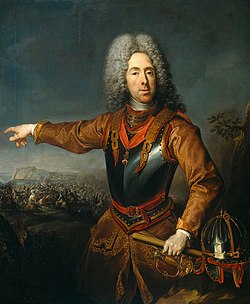This article includes a list of references, related reading, or external links, but its sources remain unclear because it lacks inline citations .(September 2014) |

Together with the Hussars and Uhlans, the Imperial and Royal Dragoons (German : k.u.k. Dragoner) made up the cavalry of the Austro-Hungarian Army from 1867 to 1914.
Contents
After 1867, Austria-Hungary had de facto three armies at the same time. This unique situation arose because the monarchy had been weakened by the losing the war against Prussia, and consequently had, in effect, to guarantee the autonomy of Kingdom of Hungary in the so-called Compromise of 15 March 1867. This led the Hungarian half of the Empire to immediately begin establishing its own army: the Royal Hungarian Honved (Hungarian: Magyar Királyi Honvédség). In response, the Cisleithanian half of the Empire also began to build its own army, the Imperial-Royal Landwehr. These two new forces thus existed alongside the Common Army (Gemeinsame Armee) that represented the empire as a whole.
However, unlike the hussars and uhlans, there were no dragoon units in either of the two Landwehrs.







